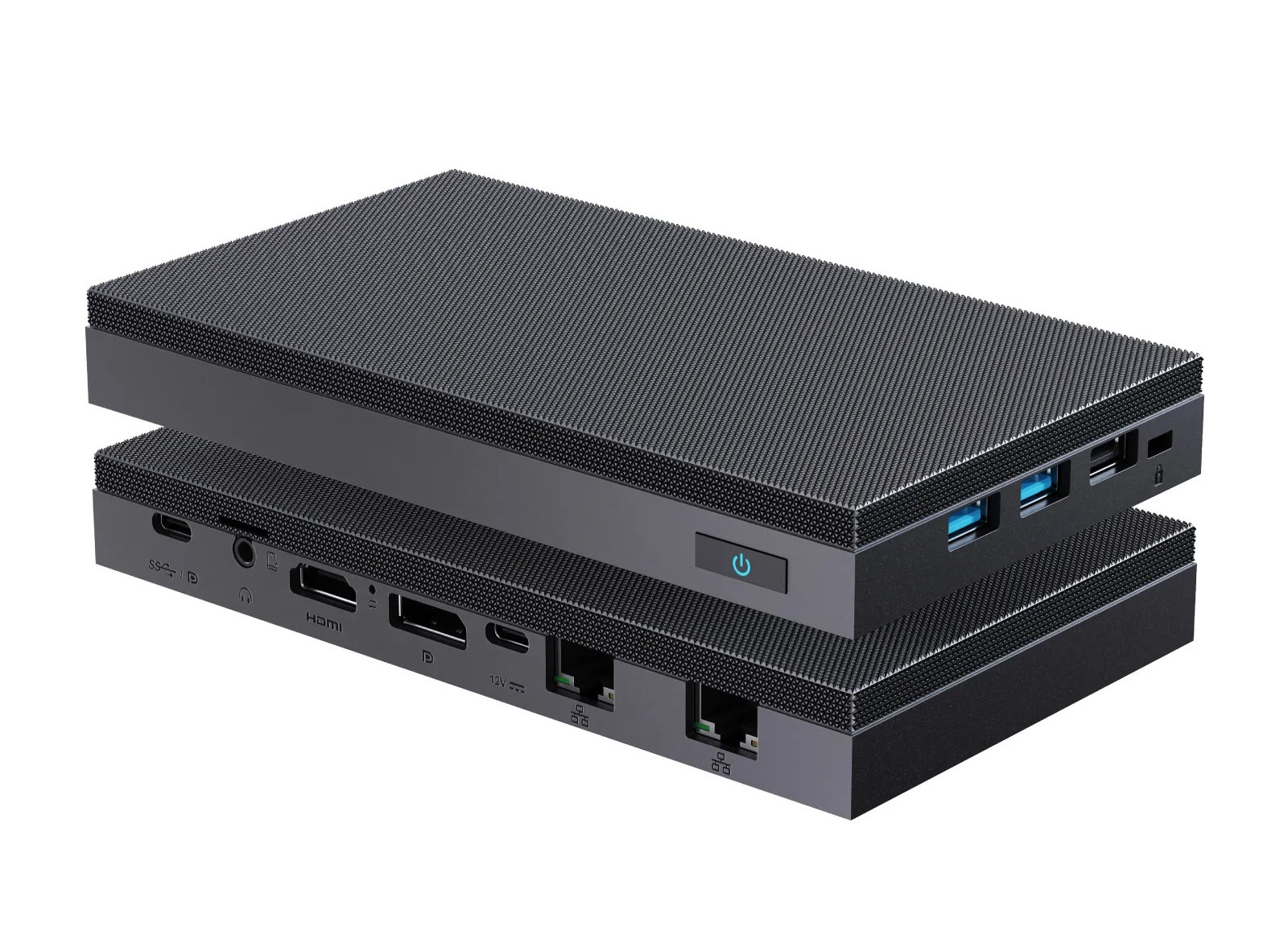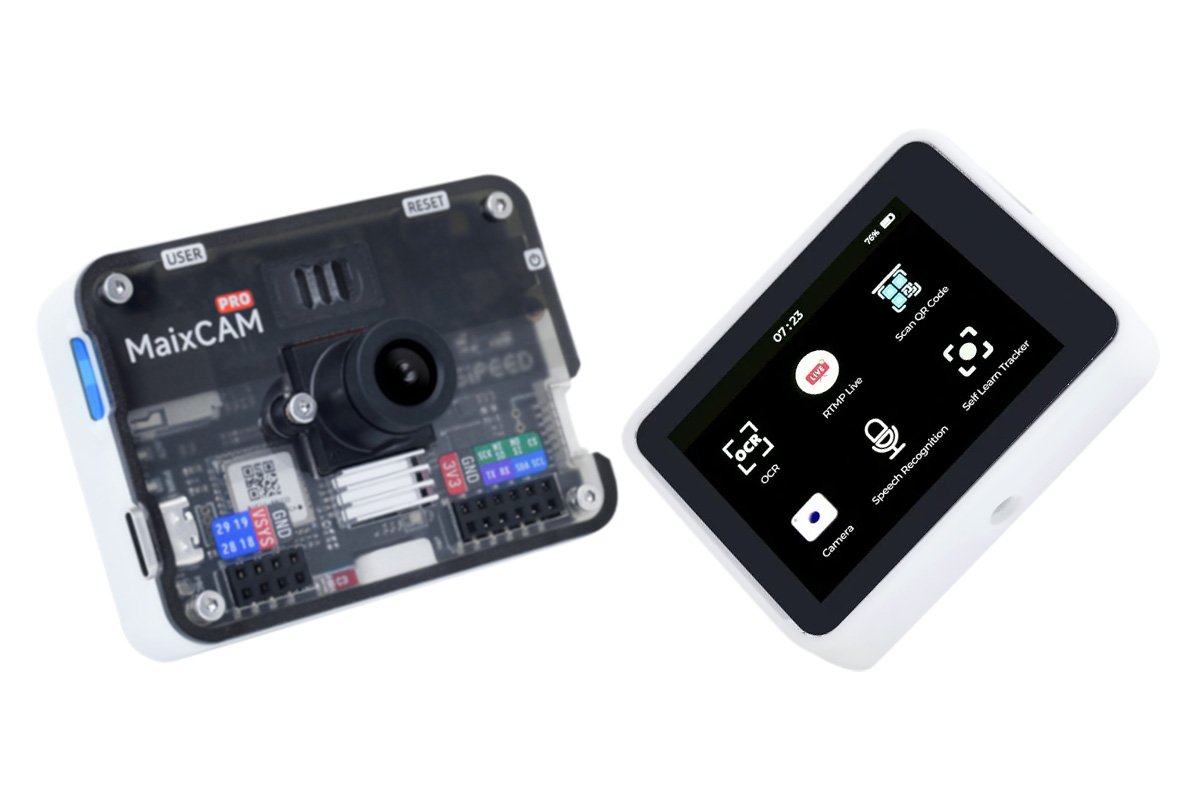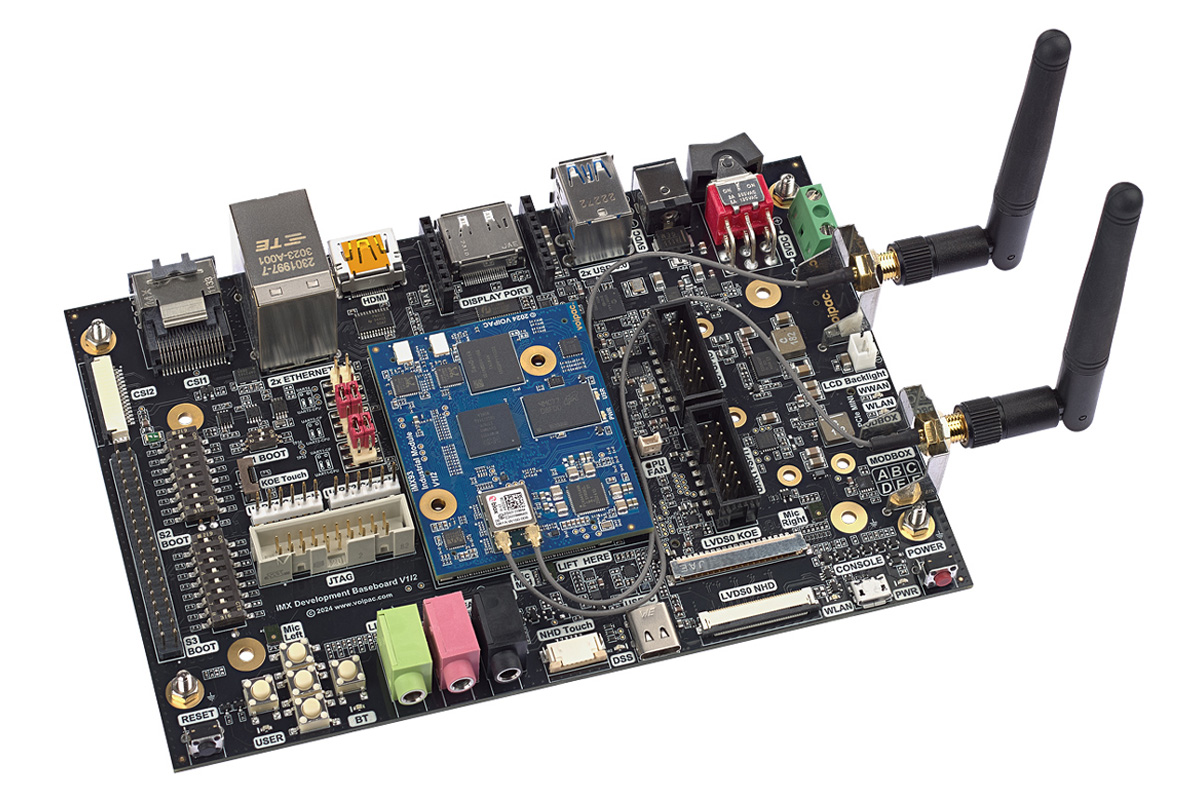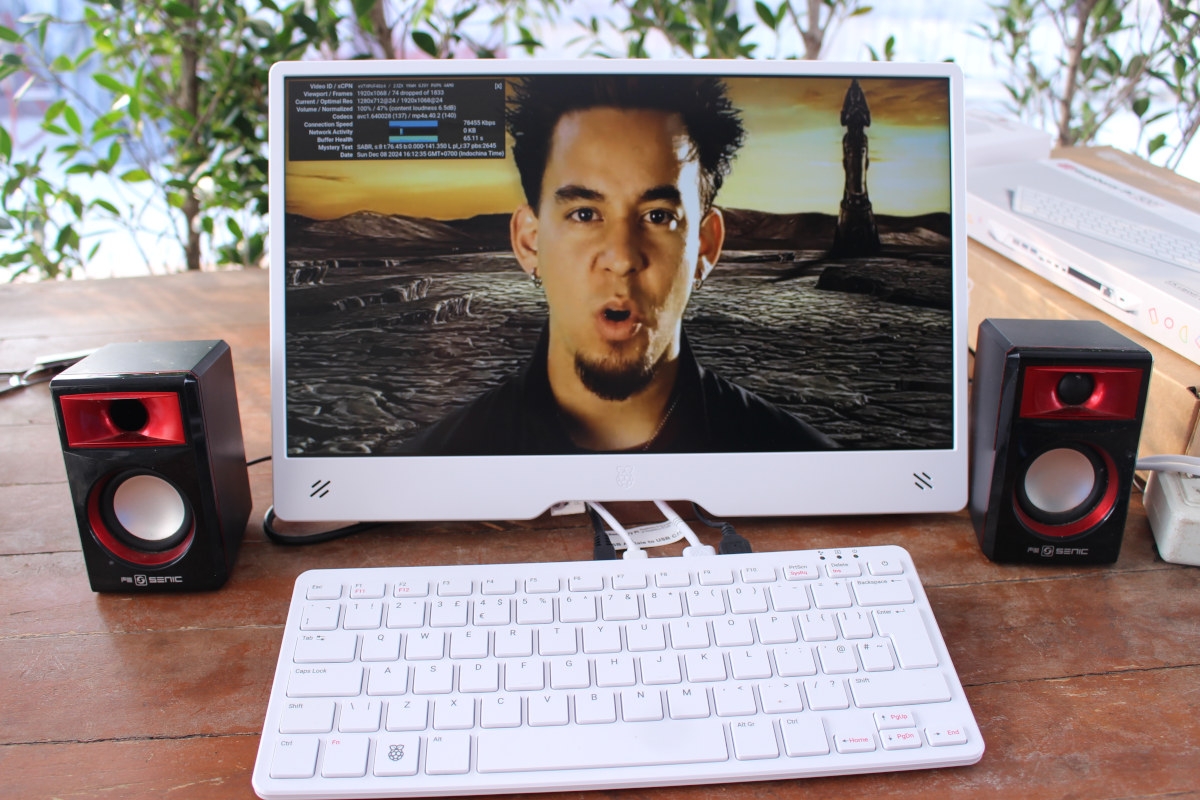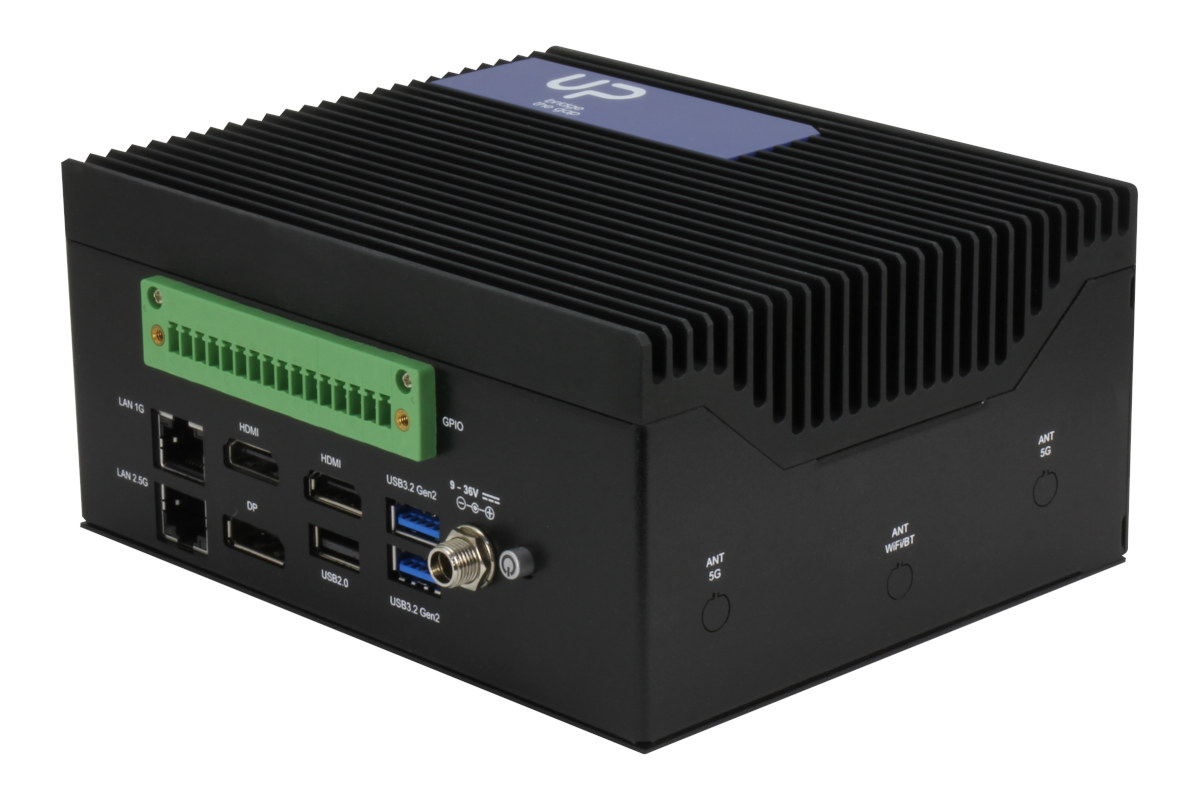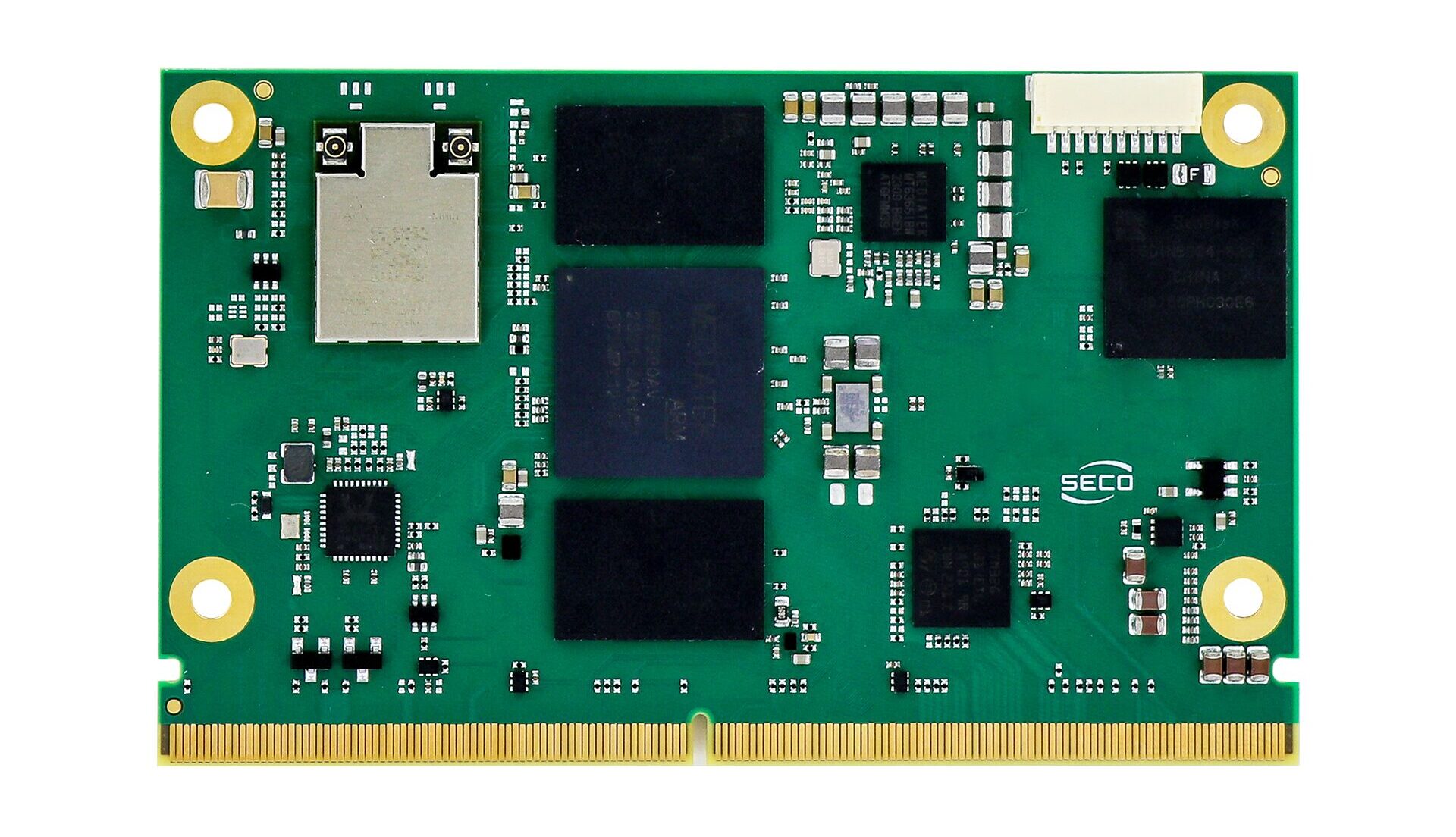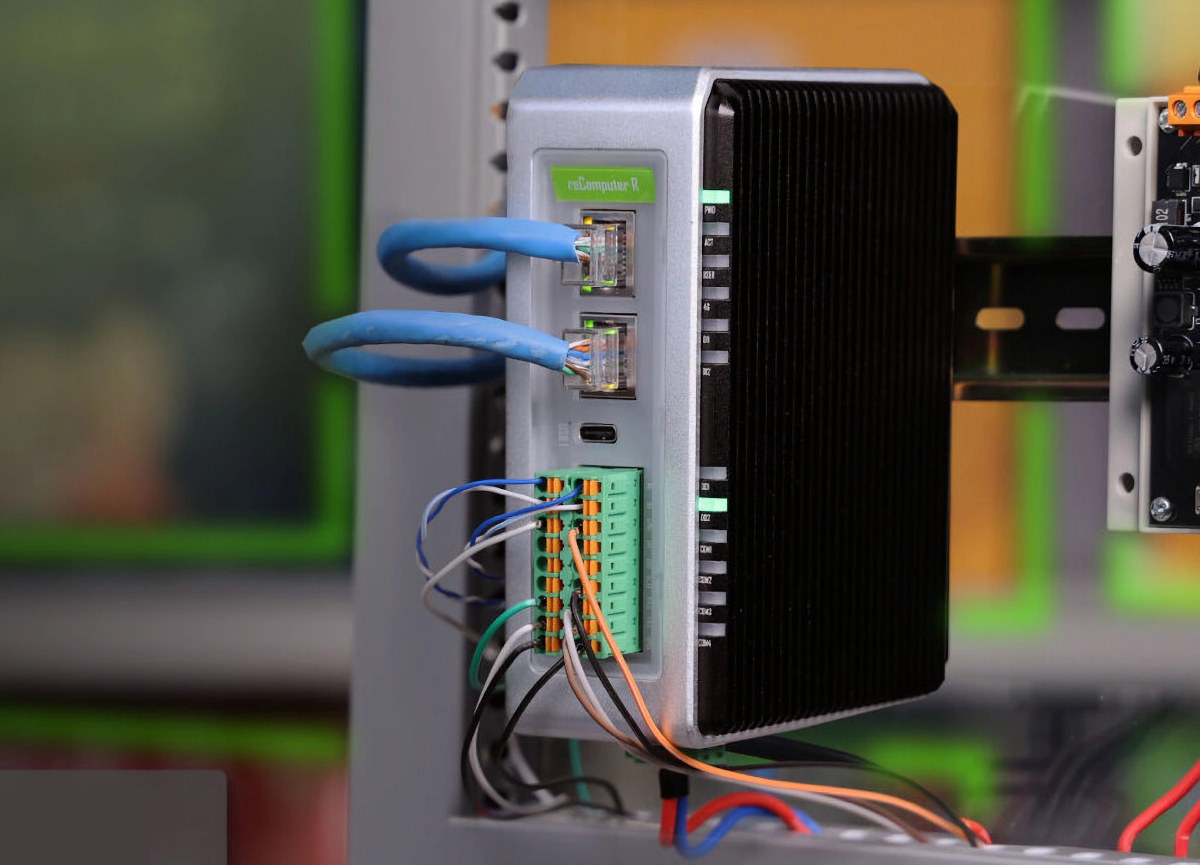MeLE QuieterDL is a fanless mini PC with an ultrathin design similar to the MeLE Quieter4C, albeit larger, and featuring two 2.5GbE RJ45 ports and supporting triple display setups via HDMI, DisplayPort, and USB-C connectors. The computer also comes with up to 16GB LPDDR4 RAM, 512GB storage, a microSD card slot, a 3.5mm audio jack, three USB 3.2 ports, one USB 2.0 port, WiFi 5 and Bluetooth 5.1 wireless connectivity, and Kensington lock slot for theft prevention. MeLE QuieterDL specifications: SoC – Intel Processor N100 CPU – Quad-core Alder Lake-N processor @ up to 3.4 GHz (Turbo) GPU – 24EU Intel HD graphics @ 750 MHz Cache – 6MB cache TDP: 6W System Memory – 4GB, 8GB, or 16GB LPDDR4X Storage Up to 512GB storage; support up to 4GB (unclear where it’s an eMCM flash + SSD configuration, or SSD only) MicroSD card reader Video Output 1x HDMI 2.0 port […]
Sipeed’s MaixCAM-Pro AI camera devkit adds 2.4-inch LCD, 1W speaker, PMOD interface on top of WiFi 6 and BLE 5.4
Sipeed has recently released the MaixCAM-Pro AI camera devkit built around the SOPHGO SG2002 RISC-V (and Arm, and 8051) SoC which also features a 1 TOPS NPU for AI tasks. The module includes a 2.4-inch color touchscreen and supports up to a 5MP camera module. Other features include WiFi 6, BLE 5.4, optional Ethernet, built-in audio capabilities, a PMOD interface, GPIOs, and more. Additionally, it features an IMU, RTC chip, and AXP2101 power management for enhanced performance. The module is designed for AI vision, IoT, multimedia, and real-time processing applications. Just a few months back, Sipeed introduced the MaixCAM AI camera devkit, which is also built around the SOPHGO SG2002 RISC-V SoC. The new module improves on the MaixCAM with a redesigned PCB, upgraded casing, and various new features including a 2.4-inch IPS touchscreen (640×480), a 1W speaker, expanded IO interfaces, a power button, and an illumination LED. It also […]
VOIPAC iMX93 industrial development kit targets AI, HMI, and Edge Computing applications
VOIPAC Technologies has recently launched its iMX93 Industrial Development Kit (iMX93 module and iMX development baseboard) which comes in Max, Pro, Basic, and Lite configurations. The system-on-module (SoM) is built around the NXP i.MX93 SoC with dual-core Arm Cortex-A55 application processor running at up to 1.7GHz, a Cortex-M33 co-processor running at up to 250MHz, and an Arm Ethos-U65 microNPU with up to 0.5 TOPS of AI performance. Other features include DDR4 memory, eMMC Flash, and industrial-grade 100-pin shielded connectors for signal integrity and thermal performance. Additionally, the devkit also exposes CAN, PWM, ADC, etc.. signals and supports WiFi 6, Bluetooth 5.3, and dual GbE. These features make the VOIPAC iMX93 industrial development kit suitable for applications including AI, machine learning, human-machine interface (HMI) solutions, and more. iMX93 Industrial Development Kit specifications: System-on-Module (four options) iMX93 Industrial Module Max SoC – NXP i.MX 93 dual-core @ 1.7 GHz with real-time Cortex-M33 co-processor NPU […]
Raspberry Pi 500 review with Raspberry Pi Monitor and teardown
The Raspberry Pi 500 keyboard PC is just out along with the 15.6-inch Raspberry Pi Monitor and received samples from Raspberry Pi for review a few days ago. I’ve had time to play with both, so in this review, I’ll go through an unboxing of the kit I received and report my experience with both the keyboard PC and monitor. Unboxing I received two packages. The first one with the Raspberry Pi Monitor, and the second with a Raspberry Pi 500 (UK layout), a 27W USB-C power adapter, and a micro HDMI to HDMI cable. So not quite a full Raspberry Pi 500 Desktop Kit since there’s no mouse and beginner’s manual but close to it. Let’s start with the keyboard PC. The bottom side of the package has some specs and a logo for the keyboard layout, in this case “UK”. There’s only the keyboard PC in the package. […]
Raspberry Pi 500 keyboard PC launched together with 15.6-inch Raspberry Pi Monitor
The Raspberry Pi 500 keyboard PC is now available with the guts of a Raspberry Pi 5 including a Broadcom BCM2712 quad-core Cortex-A76 SoC, 8GB LPDDR4x and a 32GB microSD pre-loaded with Raspberry Pi OS. But the company also took the opportunity to launch the 15.6-inch Raspberry Pi Monitor that was first showcased at Embedded World 2024. That means Raspberry Pi launched 22 products this year including kits, and we’re promised that would be the last launch for 2024! But Pi fans can expect a small surprise in the first half of January… Raspberry Pi 500 keyboard PC Raspberry Pi 500 specifications: SoC – Broadcom BCM2712 CPU – Quad-core 64-bit Arm Cortex-A76 processor @ 2.4GHz GPU – VideoCore VII GPU with support for OpenGL ES 3.1 graphics, Vulkan 1.2 VPU – 4Kp60 HEVC decoder System Memory – 8GB LPDDR4X-4267 SDRAM Storage – 32GB microSD card preloaded with Raspberry Pi OS […]
UP Xtreme i14 Edge – An Ubuntu 24.04 Pro industrial mini PC powered by Intel Core Ultra “Meteor Lake” SoC
UP Xtreme i14 Edge is an industrial fanless mini PC preloaded with an Ubuntu Pro-validated Ubuntu 24.04 Linux distribution and powered by an Intel Core Ultra 5/7 “Meteor Lake” SoC with up to 64GB LPDDR5. The device is based on the UP Xtreme i14 SBC we covered last June, and comes with M.2 PCIe sockets for NVMe SSD, a SATA port, 2.5GbE and GbE interfaces, support for WiFi and 4G LTE/5G wireless modules, four 8K capable video output ports (HDMI, DP, and USB-C), and three USB Type-A ports, but is housed in a fanless metal enclosure with two RS232/RS485 DB9 connectors and an externally-accessible terminal block for GPIO signals. UP Xtreme i14 Edge specifications: Meteor Lake-H/U SoC (one of the other) Intel Core Ultra 7 165H 16-core (6P+8E+2LPE) processor @ 1.4 / 5.0 GHz with 24MB cache, Intel 8Xe LPG graphics @ 2.3 GHz, Intel AI Boost NPU; TDP: […]
SECO launches Mediatek Genio 510 and 700 SMARC SoMs built for industrial and edge AI applications
SECO SOM-SMARC-Genio500 and SOM-SMARC-Genio700 are two new SMARC system-on-modules products powered by MediaTek Genio 510 and 700 Cortex-A78/A55 series SoCs. These industrial modules are designed for high power efficiency and offer reduced energy consumption even during intensive edge AI workloads, and are suitable for retail touchscreens, intelligent industrial sensors, advanced conferencing systems, and dynamic digital signage. Both modules feature up to 8GB LPDDR4 memory, 64GB eMMC flash, two Ethernet interfaces via RGMII and USB, an optional M.2 slot for a Wi-Fi/Bluetooth module, and camera inputs. We’ve previously considered Via’s offerings with the same MediaTek Genio 700 application processor: a SMARC module, a single-board computer, and a fully embedded system. The IBase ISR500 is another option featuring the Mediatek Genio 510 or Genio 700. SECO SOM-SMARC-Genio700 & SOM-SMARC-Genio510 specifications: SoC (one or the other) SOM-SMARC-Genio700 – MediaTek Genio 700 (MT8390) CPU – Octa-core processor with 2x Cortex-A78 cores @ up to […]
reComputer R1113-10 industrial IoT gateway offers isolated RS485, RS232, DI, DO, and dual Gigabit Ethernet
Seeed Studio has launched the reComputer R1100 series industrial IoT gateway family based on Raspberry Pi CM4. The first model, the reComputer R1113-10, is powered by a Raspberry Pi Compute Module 4 module with 2GB RAM and 8GB eMMC storage. It includes two isolated RS485 ports, two isolated RS232 ports, DI and DO interfaces, and twelve LED indicators. Additional connectivity options include dual Gigabit Ethernet ports, Wi-Fi, Bluetooth 5.0, LoRa, 4G LTE, and Zigbee. The device also features two USB-A 2.0 ports, a USB-C 2.0 port for OS flashing, an HDMI 2.0 output, and a MicroSD card slot. There are many such industrial IoT gateways based on Raspberry Pi CM4 and other SoMs or SoCs on the market, and we covered a bunch including the Compulab IOT-DIN-IMX8PLUS, Digi IX40, Dusun DSGW-380, Cytron IRIV PiControl, and Robustel EG5101 and EG5200, among others, each with their own unique set of features. reComputer […]


